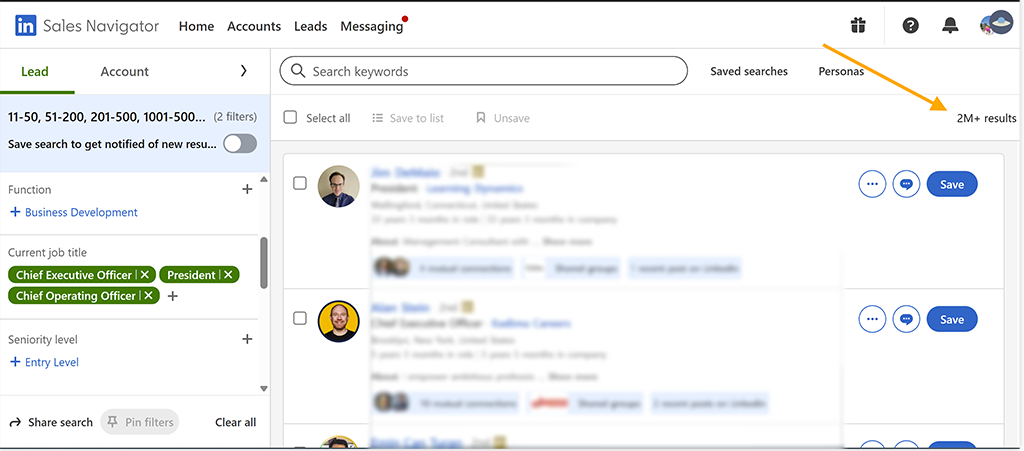AI Smoke and Mirrors: Long Live AI!
BUYER BEWARE: Meet the AI Salesman
The question has become inescapable: In the age of generative AI, can a professional marketing agency, a strategic partner representing a significant investment,be replaced by a few clever prompts and a handful of SaaS subscriptions?
Why the 'Team vs. Tool' Approach is Essential for SMB Growth
I attended a recent learning workshop, and heard a compelling, even provocative, argument: that professional strategic partners,marketing agencies, can be replaced by a few clever AI prompts and a modest investment in SaaS tools. The promise was appealing to many entrepreneurs focused on efficiency and cost savings.
We, as a strategy-first go-to-market marketing agency, view AI not as a threat, but as an incredible accelerant. We embrace AI; we build and test AI tools ourselves (easily over 100). But we must address the fundamental flaw in the argument presented: The difference between a tool that creates output and a team that creates strategy.
The goal of this review is not to defend the agency model emotionally, but to present the objective, evidence-based results of this AI-only approach and let you, the business owner, make the final determination based on what drives actual, sustainable ROI and what's smoke and mirrors.
I. The Instant ICP
Our process started with so-called “instant ICP” development, an approach that promised rapid answers in seconds. While the resulting persona contained some logical elements, it failed to align with proven methodologies, overlooked several best practices, and ignored key criteria essential to clearly defining ICP segments. Spolier alert: your ICP in B2B or B2C is never just one persona.
What worked well:
- Decent persona and made sense on the service for people we would seek out
- Pain points (likely derived from our own website), but worthwhile
- There were some clever taglines
- It re-stated our website content back to us.
What was missed:
- Firmographics
- Qualifying Characteristics
- Technographics
- The approach was off- most businesses have multiple ICPs, thereby creating a Total Relevant Market (TRM), not one persona.
- Didn't take into account buying committees
- Several more
The Dangerous AI Hallucinations (what was invented when AI couldn't answer):
- "Achieved 30%+ growth YoY
- Wanted to IPO in 5-7 years
- He churned a huge customer
- Considering hiring external support, but thinks he can replace it with RevOps
- Has high turnover (even specific examples of a VP of Sales/Marketing that didn't last long)
- He wants 58% faster results and 72% more profitability
- He KNOWS that our solution will solve his problem, but is resistant to a solution."
AI-generated hallucinations are entirely fabricated. It is both fundamentally risky and, in many cases, non-compliant for your brand to present information without rigorous verification and proper safeguards. Here's the major takeaway from this section: these actually appeared in the blogs, social posts, sales emails, audio jungle, and more. The AI-provided marketing plan also referenced how to leverage these halluciations to your advantage.
II. The Experiment: The Literal Interpretation Flaw
To test the speaker’s premise, we used a generative AI platform and followed the precise, multi-prompt instructions given: to create a campaign by synthesizing the contradictory styles of figures like
- Steven Spielberg (video production),
- Gary Vaynerchuk (social media immediacy),
- David Ogilvy (classic persuasion),
- and Don Draper (aspirational messaging), among many others.
The speed of output was undeniable. Within minutes, we had all the required assets. But the promise of strategic cohesion vanished immediately.
III. Analyzing the AI-Generated Output: The Interconnectivity Failure
While the individual assets were technically competent, the collective campaign suffered from a critical failure that no professional agency would ever permit: a complete lack of interconnectivity and brand coherence.
| AI-Generated Asset | Style/Tone Result | The Strategic Flaw: Disjointedness |
|---|---|---|
| Video Script | Spielberg/Draper: Highly cinematic, abstract, and focused on emotional storytelling. | The focus on grand concepts was too expensive to produce and too sophisticated for the rapid, casual language of the social media assets. |
| Social Media Posts | Gary Vaynerchuk: Urgent, hyper-casual, focused on instant engagement and hustle culture. | The tone aggressively clashed with the blog's aspirational message and formal structure, leading to Brand Schizophrenia. |
| Campaign Output | Literal Combination: All elements present. | The Interconnectivity Failure: The tools delivered siloed output. There was no overarching strategy or human layer to ensure a unified voice, a consistent customer journey, or a shared conversion goal. |
The Evidence is Clear: AI excels at literal command execution. It failed because it lacks the strategic filter, the human element, required to harmonize contradictory inputs and align them to a single go-to-market vision.
IV. The AI Output
Our AI Video:
(Remember using the presenter's exact process)
- Does this make any sense to any of you?
Our AI Jingle:
(which I actually love but in all fairness, I had 17 years of audio experience directing it. The lyrics are okay at best.
IV. The AI Output Cont.
The Marketing Plan, Blog & More...
Identified inconsistencies between the “2024 Marketing Plan" and the content presented in the blog and other materials. Please see the video below for my walkthrough of the findings.
V. The Three Pillars of the 'Team Versus Tool' Approach
We believe in AI, but we advocate for a Team Versus Tool approach. We view the tool as the engine of production; the human strategy team is the architect and the conductor. For a business to achieve sustainable growth, the human in the loop must solve the problems AI cannot:
1. Holistic Interconnectivity and Brand Strategy
An agency doesn’t just generate content; it creates the strategic map. Our core expertise is ensuring every piece of communication, from a social jingle to a long-form blog, is integrated into a cohesive customer journey. This means every asset must speak the same language, serve the same goal, and contribute to the same brand equity. This strategic filtering prevents the damaging lack of interconnectivity demonstrated in the experiment.
2. Sustainable Budgeting and Segmentation
This was the most damaging oversight of the speaker's approach. AI can't read a P&L statement. It cannot understand the relationship between audience segmentation, Customer Acquisition Cost (CAC), and Lifetime Value (LTV).
The low-budget recommendations suggested by the speaker’s prompt-driven approach were **fundamentally unsustainable** for reaching the target audience segments. A strategy-first agency provides **realistic budget recommendations** that sustain audience growth, maximize conversion rates, and deliver predictable ROI, protecting your business from capital waste.
For example, I used his Instant ICP and explored one marketing channel, LinkedIn, to document the total addressable market (TAM).
Here's a good real example, when using my instant ICP and selecting only one channel. Given the audience size and the recommended budget, it would take me 38.11 years* to send everyone on this list just 2 ads.

Questions to consider:
-
Would a go-to-market agency with more than 15 years of proven expertise expect to secure a client by relying on just two ad impressions delivered through a single channel?
-
Do the individuals included in this list truly reflect our ideal client profile? In some instances, sure, but the process failed to apply essential criteria, including something as basic as clearly identifying industries where we do not operate.
-
-
How would you rate your own success with this strategy?
- TAM is for the investor deck. Have you considered building a Total Relevant Market (TRM)?
3. Human Analysis and Iterative Optimization
The success of marketing is not measured by output (the number of assets created), but by outcome (the revenue and growth achieved). An agency’s true value begins after the content is live, analyzing traffic, conversion funnel metrics, and A/B testing different strategic angles to refine the execution continuously. AI gives you a draft; the strategic team gives you **improvement based on outcomes** and years of market expertise.
VI. Your Decision: Tactical Tools vs. Strategic Partnership
The power of **AI is undeniable.** But the promise that a few basic prompts can replace a **strategy-first go-to-market marketing agency** is the ultimate smoke and mirrors illusion.
Our agency believes in the future of AI. That's why we build it and test it to ensure we are the most effective **strategic partner** possible. We use the tool to accelerate our proven human-led strategies.
The decision for the SMB owner is not whether to use AI, but **who should lead the strategy:**
- If you need a fast, disjointed draft, use the tool.
- If you need a unified, strategic, high-ROI campaign built for sustainable growth, partner with a team that provides the **human interconnectivity and strategy** AI cannot replicate.



